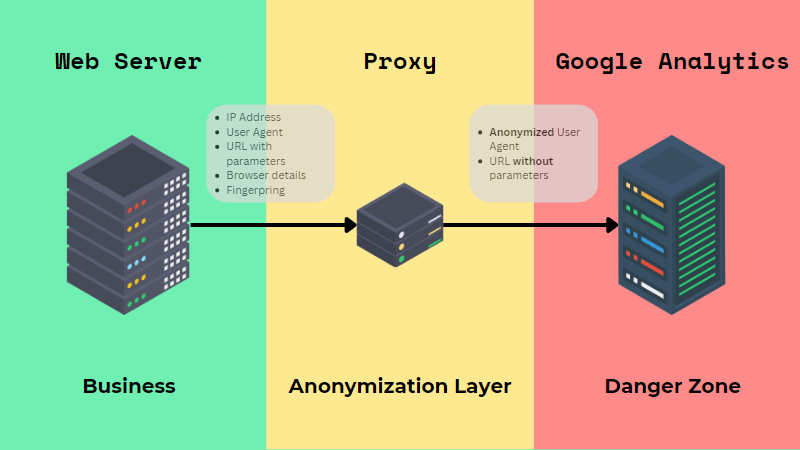Mastering the Art of Conquering Data Collection Limitations in Google Analytics for Better Decision-Making
In the realm of digital analytics, the capability to essence purposeful insights from information is vital for informed decision-making. By employing tactical strategies and advanced methods, organizations can raise their data high quality, unlock hidden understandings, and lead the way for even more educated and efficient choices.
Data Quality Evaluation
Information top quality analysis includes reviewing different facets such as accuracy, efficiency, consistency, and timeliness of the information. One essential aspect to consider is information precision, which refers to just how well the data reflects the real values of the metrics being measured.
Efficiency of data is an additional important consider analyzing information high quality. It includes guaranteeing that all necessary information points are gathered and that there are no gaps in the info. Insufficient information can skew evaluation outcomes and prevent the ability to obtain a detailed view of user actions or website efficiency. Consistency checks are also vital in data top quality assessment to identify any type of inconsistencies or anomalies within the data set. Timeliness is just as important, as obsolete information might no longer be appropriate for decision-making processes. By prioritizing data quality assessment in Google Analytics, businesses can boost the integrity of their analytics reports and make even more informed choices based upon precise understandings.
Advanced Monitoring Strategies
Utilizing advanced tracking techniques in Google Analytics can substantially boost the deepness and granularity of information collected for more comprehensive evaluation and insights. One such strategy is occasion monitoring, which allows for the monitoring of certain interactions on a web site, like click buttons, downloads of files, or video clip sights. By carrying out occasion monitoring, organizations can acquire a deeper understanding of customer habits and involvement with their on the internet material.
Additionally, personalized dimensions and metrics give a means to tailor Google Analytics to certain service demands. Customized measurements enable the development of brand-new information points, such as customer roles or customer sectors, while customized metrics make it possible for the monitoring of distinct performance indications, like income per customer or ordinary order value.
In addition, the usage of Google Tag Manager can streamline the application of tracking codes and tags across an internet site, making it much easier to take care of and release innovative monitoring setups. By using these innovative monitoring methods, companies can open important understandings and enhance their on-line techniques for much better decision-making.
Custom Measurement Application
To improve the deepness of data gathered in Google Analytics beyond innovative monitoring techniques like event tracking, businesses can apply customized dimensions for more tailored insights. Customized dimensions permit businesses to specify and collect certain data factors that are appropriate to their special objectives and goals (What Data Does Google Analytics Prohibit Collecting?). By assigning custom dimensions to various components on a web site, such as user communications, demographics, or session information, organizations can get a much more granular understanding of just how customers involve with their on-line residential or commercial properties

Acknowledgment Modeling Strategies
By employing the best acknowledgment model, businesses can precisely attribute conversions to the ideal touchpoints along the customer trip. One usual attribution design is the Last Interaction version, which provides credit report for a conversion to the last touchpoint an individual communicated with prior to converting.

Information Experiencing Evasion
When taking care of big volumes of information in Google Analytics, getting over data sampling is necessary to make sure precise understandings are derived for educated decision-making. Information tasting takes place when Google Analytics estimates patterns in information instead of evaluating the full dataset, possibly bring about skewed a fantastic read outcomes. To stay clear of data sampling, one reliable strategy is to decrease the date range being examined. By focusing on shorter time structures, the chance of encountering tasted information reductions, providing a much more specific depiction of user behavior. Furthermore, making use of Google Analytics 360, the premium version of the system, can help reduce tasting as it enables for higher information limits before tasting kicks in. Executing filters to limit the information being assessed can likewise help in preventing sampling problems. By taking these aggressive actions to decrease data sampling, organizations can extract a lot more precise insights from Google Analytics, causing better decision-making and improved overall performance.
Conclusion
To conclude, understanding the art of overcoming information collection constraints in Google Analytics is crucial for making notified choices. By conducting a complete information top quality analysis, executing sophisticated monitoring strategies, making use of custom-made measurements, employing attribution modeling techniques, and avoiding data tasting, companies can make sure that they have accurate additional hints and reputable information to base their choices on. This will ultimately bring about more effective strategies and far better outcomes for the company.
